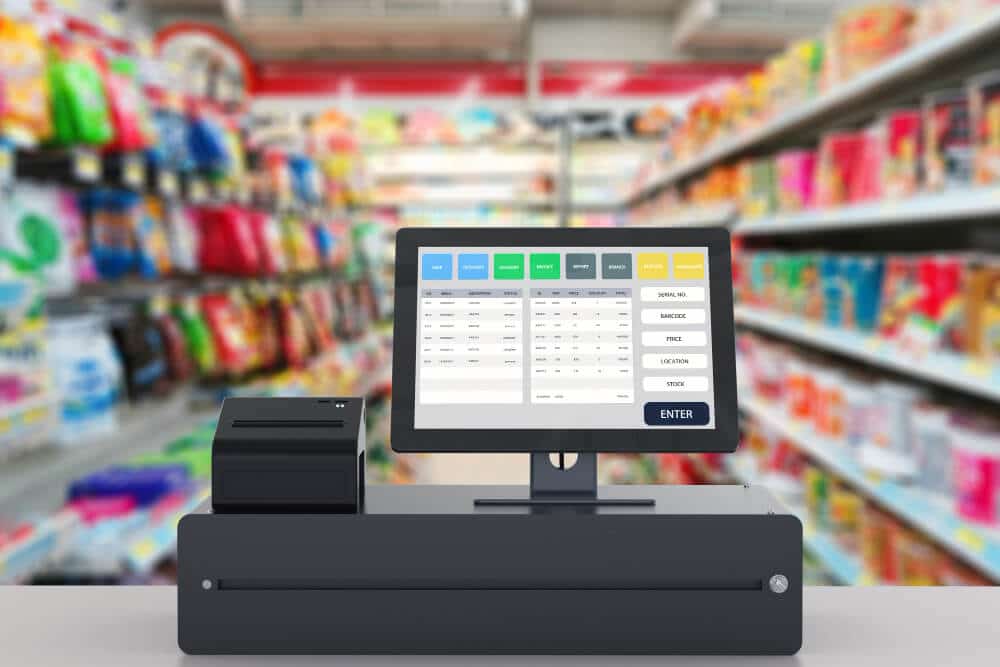If you are looking to expand your business and take your products online – e-commerce can be the best way to do so. It will not only help you reach a broader audience but increase your revenue as well.
But setting up an e-commerce store and starting selling online can be a daunting task. Many factors come into play when it comes to transacting from relating to e-commerce.
You have to choose the right platform, web hosting for your store, payment gateways, marketing strategies, and whatnot. You have to make sure that everything is on top of the line to make sure that you are not wasting money and time.
If you are planning to start your e-commerce store for your retail business, in this article, we have shared everything you need to know. From how to sell online to tips to make the most out of your e-commerce store.
Table Of Content
E-commerce in Retailing: What Does it Mean?
Understanding the Differences Between E-commerce and Retail
How can Retailers Sell Their Products Online?
Pros and Cons of Selling Online
E-commerce in Retailing: What Does it Mean?
As you can guess by the name – e-commerce in retail simply means selling your retail products online. The best part about running an online retail store is that owners can get the best of both worlds.
This is because they’ll have access to the online market as well as the regular physical store. They can make more revenue as well as get exposure to a wider audience.
Having an online store helps you sell products 24/7 making it a convenient way to make a good income. You will be able to reach out to a variety of customers who would love to get things home delivered due to their busy lifestyles.
For example, if you have a clothing store, you can easily take it to the online market. You can work with existing e-commerce platforms like Amazon and eBay or you can build your online store from scratch with the help of developers or platforms like Woocommerce or Shopify.

Understanding the Differences Between E-commerce and Retail
There are a few key differences between E-commerce and retail – each of them has its positives and negatives.
1. Market Size
One of the key differences between retail and e-commerce is the market size. Since online stores can be accessed by people all over the world – it’s a clear winner.
According to a report, after the pandemic e-commerce sales increased by 14.20%. Making it one of the fastest-growing industries in the world.
Now when it comes to physical retail stores, you can’t just ignore them. Yes, indeed, they are only limited to local customers but their customer accusation is way bigger than online stores. But still physical retail stores have fewer customers than online stores.
2. Operation Costs
When it comes to the cost of operations, most e-commerce stores use a fraction of the cost that is required for running a physical store. Because with physical stores you have storage, space, hiring employees, etc.
But with an online store, you only have to pay for a domain, hosting, marketing, and the development of the site, which is just a fraction of the cost of running a physical retail store.
On the other hand, we have physical stores that require a lot of money to operate – for example, capital and operational costs, rent, wages, utility bills, management bills, etc…
3. Customer Experience
When it comes to customer experience, it depends on the customer. Some customers like to shop from the comfort of their homes and some like personal touch and a personalized experience. While some customers are comfortable with both.
With online stores, you get a more convenient way of shopping where you don’t have to stay in line, hurry in the rush hours, or waste time finding certain things.
On the other hand, with physical stores, you will have a sense of satisfaction that you are getting the right product in a good condition.
4. Complexity
Both physical and online stores come with some sort of complexity. It might take some time to understand how things work with both business models. But running a physical store is less complex than running an online store.
When it comes to running an online store – you have to do it on your own and if you are not tech-savvy, you can get into trouble.
You can always hire a developer but still, you have to know certain things like how hosting works, how to add items to your store, marketing, what are payment gateways, etc…
On the other hand, brick-and-mortar stores have been here for centuries – all you have to know is the basics legal stuff and you are good to go! This makes physical stores less complex than online stores.

Streamline your business with Octopos – A Complete POS System with Big Boys Tools without the big price.
It is a lot more than a point of sale. Octopos is easy and intuitive for you and your staff to use. Yet you get all these sophisticated tools to manage inventory, track and engage customers, get meaningful insights into your business, and much more.
5. Reach
To run a successful business, the more reach you have the better. And there is no competition for online stores when it comes to reaching out to more customers. With an online store, you can reach out to millions of customers all over the world in no time.
But with physical stores, you are limited to the geographical area that you are loaded in. You have to spread awareness and run marketing campaigns to get more people to come to your store.
6. Scalability
Online stores are more scalable than physical retail stores and there are quite a few valid reasons. The first and biggest reason is that with online stores you can reach out to millions of customers all over the world – your marketing should be on point of course.
This means you can generate more money in a short time without spending too much money or time.
With physical stores, you are kind of limited when it comes to scalability. This is because you are limited to your geographical location. You can start multiple outlets in different places but it would take a lot of time as well as money to do so.
7. Customer Base
Customer base can be a major difference between physical and online stores. Online stores are most popular among younger customers. On the other hand, physical stores are mostly preferred by older audiences.
However, when it comes to profitability, as an owner you have to target both age groups. This means you have to come up with a marketing strategy that targets both age groups.
It should be a mix of both digital (social media, email, etc…) and traditional advertising (newspapers, TV, flyers, etc…).
8. Profitability
If you can manage correctly, both online and physical stores can be profitable business models. But still, online stores can generate more income than physical stores.
Just as we mentioned earlier, with an online store you can target a wider audience and generate more income. This is because you are not limited to a certain geographical location. Plus, you don’t have to pay for rent, utilities, wages, maintenance, etc…
On the other hand, with physical stores, you are limited to a certain area and you will also have operational costs. But in physical stores, you will get more customer acquisition than in online stores, which is a big plus point.

How can Retailers Sell Their Products Online?
At this point, you can sell almost anything online. When it comes to retail stores, you can sell both online and offline. Let’s find out how you can sell your retail products online with your online store.
1. Find a Suitable E-commerce Platform
There are hundreds of e-commerce platforms available in the market. Each platform has its pros and cons. So it’s important to find a platform that is tailored to your needs.
Some of the top e-commerce platforms are
- Shopify
- WooCommerce
- Magneto
- BigCommerce, etc…
You can sell on highly popular e-commerce stores like Amazon, eBay, or Walmart marketplace. Options are many, all you have to do is to do your research and find a platform that is right for your business needs.
2. Get a Domain and Hosting
Your online store is nothing but a website where you list your products and sell those things online. To get started, you will need a domain name and a hosting provider. Your domain name must reflect your business so that your customers can trust your website.
For example, let’s say you want to sell clothes online, your domain name should reflect your clothing brand such as “abcdresses.com” or “trendyfastions.com”.
The best part about e-commerce platforms like Shopify is that they provide hosting with them. You just have to buy the domain and pay a monthly fee for the hosting. You can also hire a developer and get your hosting if you want to start your online shop from scratch.
3. Set Up Your Store
Once you have your hosting, domain, and website ready, you can start setting up the store. This means you have to add products, create categories, set prices, design the look of your store, write copy for the products, etc…
You will also need a payment gateway to receive payment online from your customers. One of the best things you can do is to set up multiple payment options like credit and debit cards, online wallets, payment apps, etc…
If you are new to this, it’s always a good idea to hire someone professional to create the store for you.
4. Market the Store
Setting up the store is the easiest part of the job – the main job is to market the store so that you can reach out to as many customers as you can. You will have multiple options like SEO, social media marketing, email campaigns, paid advertising, etc…
Marketing should be your biggest priority if you want to make profits from your online store. The best thing you can do is hire a professional digital marketer to help you run your marketing campaigns.
5. Analyze and Optimize
Once your store is ready to run, you must track every sale, dispute, chargeback, and feedback. Running a successful online business requires attention to detail and proper management. You have to make the necessary adjustments whenever you see some problem.
Tools like Google Analytics can help you measure your website’s performance in real time. This will help you make changes to your website, add new features, or change your marketing strategy.
6. Keep Yourself Open and Learn New Things
The e-commerce industry is still evolving. This means you will get daily updates, features, add-ons, etc… To beat your competition you have to be on top of the latest trends. The good news is that there are tons of resources available on the internet that will stay on top of your game.
You can subscribe to e-commerce gurus, read articles and join forums to keep yourself updated with the latest trends.

Pros and Cons of Selling Online
Everything good comes with a price and so does selling online – let’s take a look at the pros and cons of selling online so you can decide whether it’s for you or not.
Pros
1. Low Costs
So the biggest advantage of selling online is that the overhead cost is way cheaper than traditional business models such as brick-and-mortar stores. All you have to do is to pay for the domain, hosting, and any additional fee for the e-commerce platform you are working on.
There are no utility costs, maintenance costs, wages, or rent. You can hire a professional developer to build your store, but still, it would be a fraction of running a traditional business.
2. Wide Reach
As we mentioned earlier, if you have an online store, you can reach out to customers all over the world. However, you have to work hard on your marketing strategies. This will not only improve your brand awareness but increase your revenue as well.
3. Easy to Target
When it comes to selling online, targeting your ideal customer base is the most important thing. With help of the latest marketing tools, you can do this just with a few clicks. You can run ad campaigns, email campaigns, SEO, etc… to get to your ideal audience.
4. High Growth
Since you can reach out to a wide range of audience, you can generate more revenue. You have to make sure that your marketing is on point. With more customers, increased sales, and low costs, you can take your business to the next level in no time.
Cons
1. Competition
One of the biggest disadvantages of running an online store is the competition. There are thousands of other business owners who are selling the same thing that you are trying to sell. It can be a huge problem for new sellers to stand out.
2. Takes Time to See Some Positive Results
Selling online requires a lot of time and effort. You won’t be seeing immediate results any time soon. You have to keep working on your store and take things slow. It might take months to see some positive results so it’s better to keep your expectations low.
3. High Customer Acquisition Costs
Yes, it’s true that if you have an online store, you can reach out to a wider customer base. But the acquisition cost can make you think twice. You have to spend both time and money to reach out to customers, and sometimes you might not even see any results.
Conclusion
So there you have it! Now you know what it takes to run a successful online store. There are both pros and cons to running an online store, so you have to be aware of them. But if you manage to understand what it takes to run an online store, it can be a great income source. So make sure to do your research and create a business plan before starting your online store. With a bit of hard work and patience, you will be successful in no time.

